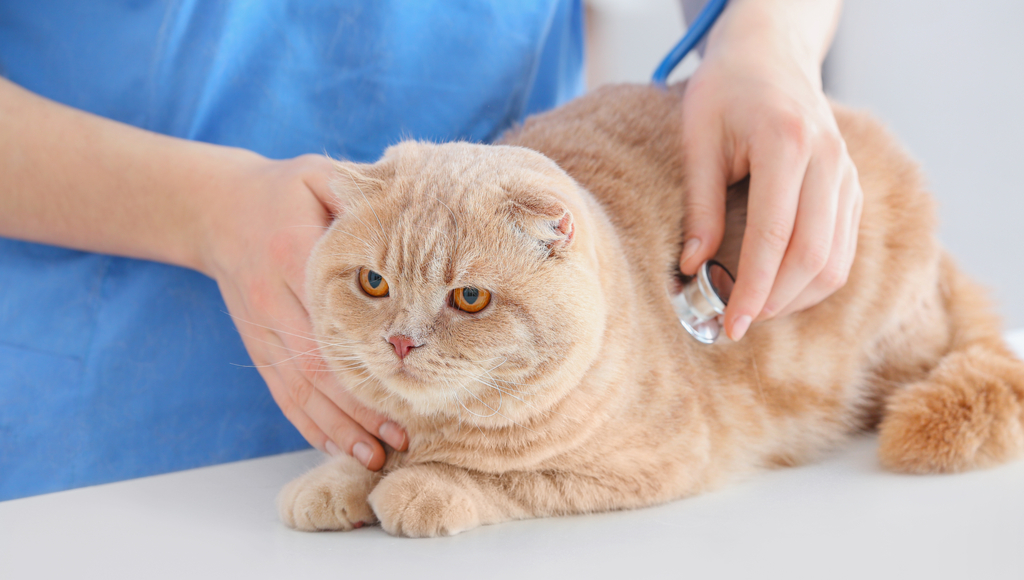Understanding How Pet Insurance Works
Know the costs, coverage and exclusions of pet insurance before you buy a policy.

Pets are family and you want only the best for your pet. Regular veterinary visits to keep your dog or cat healthy are essential, but unexpected illnesses, accidents and even breed-specific conditions are a fact of life. Pet insurance may be a sensible way to protect yourself from the financial blow that can come with an emergency, but knowing how pet insurance works is critical to determining if it's right for you.
What You Pay
Much like human health insurance, pet insurance does feature a monthly premium. Some insurers base the amount on your pet's breed and age. Purebred pets tend to have more hereditary issues than "mutts," and, just like with people, older pets are more prone to certain conditions like arthritis or glaucoma. Other factors affecting the monthly cost include the deductible amount and type of coverage you select.
Deductibles work the same for pet insurance as they do for people insurance. You must pay in full for any charges up to the annual deductible amount before the insurance will cover anything. Many plans allow you to choose the deductible; some go as low as no deductible and others up to $2,000 or more. The higher your deductible, the lower your premium.
Once you've hit your deductible, the insurance company covers a percentage of all applicable services. A plan may pay 80%, leaving you with a 20% co-pay. As with deductibles, some plans offer higher or lower percentages in exchange for a higher or lower premium.
Similarly, you can pay more monthly for a higher annual payout maximum. Some plans will only pay up to $5,000 in a year, while others allow you to increase your premium for an annual payout up to $15,000. A few even offer no annual maximum.
Remember that, unlike human health coverage, almost all pet plans require you to pay the full amount out-of-pocket then submit the bills for reimbursement. There are one or two companies that will pay the vet directly.
What They Cover
A basic pet insurance plan covers accident and illness treatment (diagnosis, medication, surgery) as long as it isn't a pre-existing condition. Most companies have a waiting period from the date of purchase before coverage begins. For accidents, it ranges from two to five days. For illnesses, it's usually no less than two weeks and can be up to a month.
Some companies also allow you to modify your pet's coverage. Maybe you want coverage only to protect against accidents and injuries. The cost for that will be lower than a plan that also covers illnesses. While no pet insurance covers pre-existing conditions, most also won't cover wellness visits. These include annual check-ups and vaccinations. Some insurers allow you to add wellness coverage for a higher premium.
A plan may not cover a breed-specific condition (for example, hip dysplasia in a German shepherd) at any time, or they may charge a higher premium to cover it. If your pet's breed is prone to a specific condition, confirm that it's covered before buying the plan.
Some plans consider certain conditions new if your pet has gone a specific length of time since he last suffered from it. For example, a plan may cover a skin allergy if your pet has been free of the problem for six months.
It's important to read the entire policy to know exactly what is covered and what isn't. If you have any questions about specific coverage limitations, ask the company before you sign up for the plan.
What to Look Out For
Because no plans cover pre-existing conditions, find out exactly how the insurance company will verify your pet's health before you buy. Some plans require a certificate from your vet. Others want proof of a comprehensive exam completed no more than 60 days prior to the start of coverage. Some may even deny a claim featuring a "related ailment." For instance, if your pet saw a vet for abdominal pain before you had insurance, any condition that includes abdominal pain in its presentation may not be covered. Ask the companies what qualifies as pre-existing.
Keep in mind that exam fees and vaccinations are not applicable to your deductible or reimbursement. Since these costs are generally fixed, ask your vet what they charge before deciding if you should add wellness coverage to your plan. The additional premium may be more than you're paying the vet.
What Does All of This Mean?
Just like your own health insurance, pet insurance is a "peace of mind" purchase. If your pet gets very sick, is clumsy or likes to eat things he shouldn't, a policy may save you thousands of dollars in the long run. If you're lucky enough to get a healthy pet who stays out of trouble, your premiums may never pay off for you. No one can predict the future, so if your budget allows for that peace of mind, the up-front costs may be worth it.
Here's an example:
- Premium = $50/month
- $250 deductible
- 80% reimbursement after deductible, up to $3,000/year
- $4,300 to remove an intestinal blockage
- After deductible, $4,050 owed
- 80% of $4,050 = $3,240
- $3,000/year limit means you pay the additional $240
- 20% copy = $810
- The insurance plan would reimburse you for $3,000, leaving $1,300 out-of-pocket ($250 deductible + $810 co-pay + $240 overage).
Are There Other Options?
Yes. Whether you decide to buy pet insurance or not, enrolling in a discount plan will save you money on every visit. Pet Assure offers a 25% discount on all in-house services at participating veterinarians. For a low monthly fee, your pet is covered immediately for everything from vaccinations to hospitalizations. There are no waiting periods or exclusions like pre-existing conditions or wellness treatment.
Purchasing pet insurance is a big decision. You should take time to do the research and see if it's right for you. In the meantime, a Pet Assure plan can save you money now and in the future.
Ready to start saving money on pet wellness care?
Then take a look at Mint Wellness, the pet wellness plan that provides fast reimbursement on routine pet care. Save on vaccinations, wellness exams, preventatives, dental, and more!
Learn More


